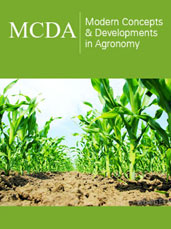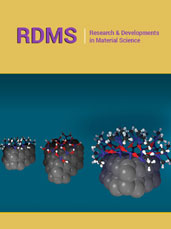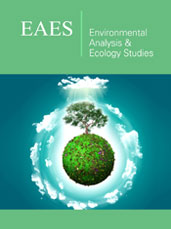- Submissions

Full Text
Modern Concepts & Developments in Agronomy
Population Increase and its Effect on Climate Change
Keith Openshaw*
Retired Forest Economist, USA
*Corresponding author:Keith Openshaw, Retired Forest economist, St. Vienna, Virginia 22180, USA
Submission: January 16, 2025;Published: January 29, 2025

ISSN 2637-7659Volume15 Issue 1
Opinion
The principal cause of global warming is the burning of fossil fuels, which adds about 9.3 billion tonnes of carbon (34.2x109tCO2) to the atmosphere each year. However, deforestation adds about another 1.4 billion tonnes of carbon (5.1x109tCO2) each year. The principal driver of deforestation is the increase in population, mainly in poor tropical countries, and to a lesser extent the expansion of commercial agriculture. If nothing is done to increase agricultural (and forestry) productivity and the temper population increase, then deforestation will increase and so will Greenhouse Gases (GHGs). Various proposals are made to increase agricultural and silvicultural productivity, capture GHG through tree planting etc. and tempering population growth. Such steps could reverse deforestation.
Trees and their products could play a positive role in meeting the Paris Accord Target. The 29th Global Climate Conference of Parties meeting in Dubai (COP29) was held in Baku, Azerbaijan from the 11th to the 23rd Nov. 2024. However, it only talked about moving away from fossil fuels, when previously the year 2030 was the target year for no longer using fossil fuels. This does not mean that liquid and gaseous fuels cannot be used, for gaseous and liquid fuels from renewable biomass could be increased substantially such as carbon monoxide, gengas, methanol, ethanol and plant oils. It was agreed that a fund of $300 billion per year from 2025 would be established to help Less Developed Countries (LDC). population. But again, nothing was mentioned about tempering population increase at COP29, which may reach 9.7 billion by 2100. This could result in a reduction of about 50 million hectares of forests and woodlands to feed this increase. Many countries have pledged to increase tree planting, but deforestation is outstripping planting as well as renewable energy such as solar, wind and water. If present trends continue, the global temperature will increase by over 5 °C by 2100 from pre-industrial levels, far above the 1.5 °C aim! Already, this year is the hottest on record and has reached1.5 °C above pre-industrial levels.
The, the population of Sub-Saharan Africa (SSA) is forecast to increase by over 300% between 2020 and 2100 if little is done to temper this increase. In SSA, two-thirds of forest loss was due to subsistence agriculture, whereas in LA&C, 70% of the loss was due to commercial agribusiness - clearing land for soybeans, palm oil and cattle ranching etc. Between 2020 and 2100, the loss of natural forest and woodland could range from 500 to 800 million ha (5.9 to 9.4 million ha per year), of which an estimated 350 to 520 million ha will be due to the subsistence sector. An estimated 66% of the loss will be in SSA, 30% in Asia and 4% in LA&C. If these estimates are anything near the truth, then the annual emissions of CO2 from deforestation will be in the region of 3.2-5.2 billion tonnes adding to GHG! This will profoundly influence global warming and negatively affect the goal of keeping the global temperature increase to 1.5 °C above the pre-industrial level. Clearly there must be concerted efforts from scientists, concerned industrialists, the private sector, non-government organizations (NGOs), councils and individual people, especially young people, to put considerable pressure on governments and international bodies to take realistic and immediate action.
What steps are necessary to reverse this trend and could trees help to meet the goals of the Paris Climate Accord by helping reduce GHGs? Governments must be much more serious in promoting the sustainable development goals (SDG) and reducing fossil fuel use: this could be done through (increased) carbon taxation, reducing or elimination subsidies on fossil fuels, on. The solutions are several - such as increasing agricultural and silvicultural productivity, promoting renewable energy, improving end use efficiency, etc. reclaiming abandoned and/or degraded lands, stabilizing shifting cultivation, protecting water sources, vesting forest resources in people at the local level and paying them for protection, improving intermediate and end-use efficiencies of wood products, decreasing (food) waste, altering eating habits away from animal proteins, improving infrastructure and education and tempering population increase, especially through empowering women.
Another intervention is planting shelterbelts to reduce evapotranspiration of cash crops to increase yields. These include: zero tilling, applying slurry from (cheap) biogas plants, manure management and adding lime to the soil. Again, intercropping with nitrogen-fixing species (including trees) can at least stabilize agricultural productivity, if not improve it: this is commonly known as agro-forestry. Pastureland could be planted with nitrogen-fixing tree species to provide fodder and shelter for animals. There are many existing nitrogen fixing trees (e.g. Acacia sp.) on such lands and increasing their presence should be encouraged. Nitrogenfixing tree species can be used to intercrop in place of shifting cultivation and to eliminate the invasive grass species by farmers, especially subsistence ones, to increase their plant and animal yields. Thus nitrogen-fixing plants, especially trees, can stabilise if it does not increase crop production and increase the carbon store in wood and soils.
Besides increasing agricultural productivity at a rate hopefully like that of population increase, it is important to increase the productivity of trees, especially nitrogen-fixing species, through breeding, cloning and selecting species that will stand climate change. Such ‘superior’ species can and should be used to improve carbon storage to help counter CO2 emissions from fossil fuels. There are considerable areas of farmland, both rainfed and irrigated, that have been abandoned due to land exhaustion, falling yields, salination and invasion by weeds, pest and diseases. Top priority should be given to the reclamation of such abandoned areas and to reducing pests and diseases. Generally, tree plantations are a cheaper alternative for ‘Carbon Capture and Storage’ (CCS), than CCS from CO2 emissions from electric power plants with storage underground or under the sea. What is more, the annual yield from such plantations may be used for wood products including fuelwood in place of fossil fuels, thus reducing the demand for fossil fuels and the increased CO2 emissions from them!
There are many tree species that can be used to reclaim land, from low to high rainfall areas and from saline to calciferous soils. The US National Academy of Sciences (NAS 1979) [1] lists trees and other legumes that can be used to restore land from deserts to tropical highlands. All legumes, especially tropical tree legumes, have a critical role to play in land reclamation and improving agricultural productivity. Other useful NAS books are Firewood Crops [2]. Some other interventions include protecting water resources, investing forests with the local people, improving intermediate and end use efficiency and improved infrastructure and education. But tempering population increase by promoting family planning is etc. critical to these efforts.
References
- Tropical Legumes: Resources for the future. National Academy of Science (NAS 1979). 2101 Constitutional Avenue, Washington DC, 20418, USA.
- National Academy of Science (NAS), Firewood Crops Volume 1 (1980), Volume 2 (1983). National Academy of Science (NAS), Washington DC, 20418, USA.
© 2025 Keith Openshaw. This is an open access article distributed under the terms of the Creative Commons Attribution License , which permits unrestricted use, distribution, and build upon your work non-commercially.
 a Creative Commons Attribution 4.0 International License. Based on a work at www.crimsonpublishers.com.
Best viewed in
a Creative Commons Attribution 4.0 International License. Based on a work at www.crimsonpublishers.com.
Best viewed in 







.jpg)






























 Editorial Board Registrations
Editorial Board Registrations Submit your Article
Submit your Article Refer a Friend
Refer a Friend Advertise With Us
Advertise With Us
.jpg)






.jpg)














.bmp)
.jpg)
.png)
.jpg)










.jpg)






.png)

.png)



.png)






